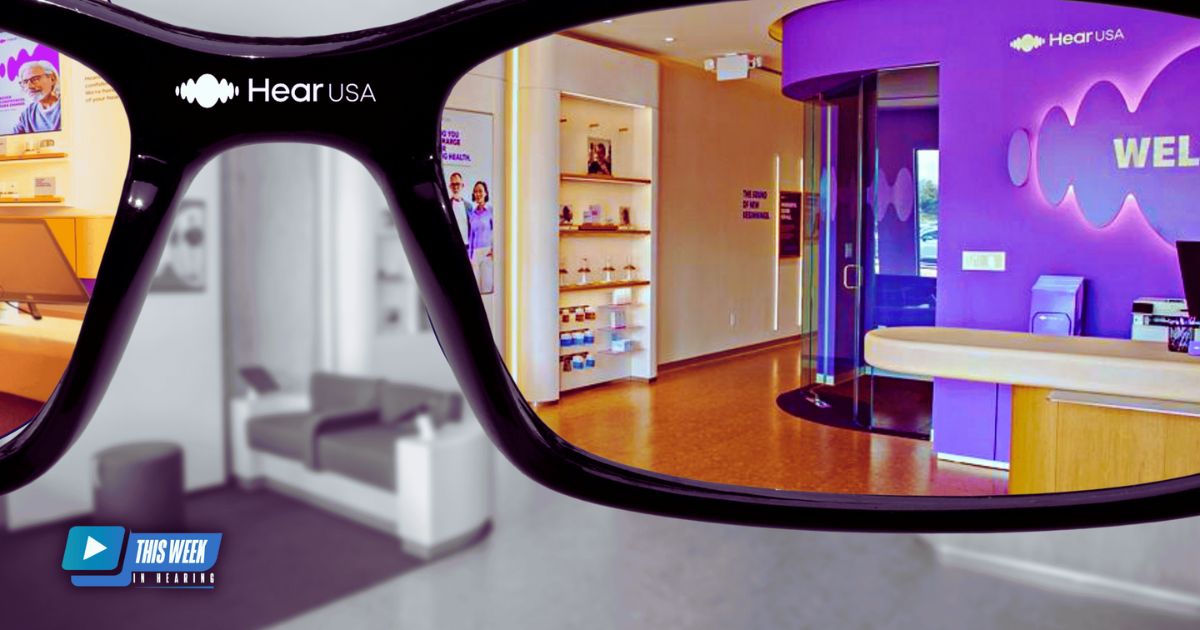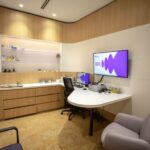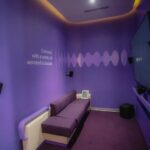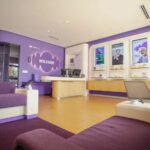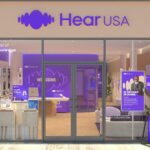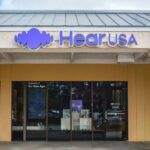HearUSA President Nick Mengerink outlines the company’s strategy to tackle the large unmet need in hearing care, including opening 25+ sleek “Centers of the Future” by March 2024. These revamped spaces feature welcome hubs for client intake, innovation walls showcasing the latest technology, and upgraded private consultation rooms to optimize appointments.
The goals are improving accessibility, transparency and comfort to reduce hearing aid stigma. As part of a wide ranging discussion, Mengerink emphasizes that the increase in insurance coverage and advancements in hearing care technology will persist in driving the industry’s growth. He compares the potential for hearing care to attain mainstream status akin to routine dental and vision care. HearUSA is strategically leveraging contracts within the expanding managed care sector to make a broader impact on people’s lives affordably.
Despite existing challenges, Mengerink remains hopeful due to the positive outlook of enhancing the visibility of hearing healthcare and meeting the rising demand.
Full Episode Transcript
All right, everybody, and welcome to another episode of This Week in Hearing. I’m thrilled to be joined today by Nick Mengerink. So thank you so much, Nick, for being on today. Thanks for being here. Awesome. My pleasure. Appreciate the opportunity to spend some time with you today, David, and looking forward to recession. Awesome. So, as the president of HearUSA wanted to have you on to discuss HearUSA in general kind of at a high level, and then looking at some of your ambitious plans for 2024 and beyond with the stores of the future. So before we get into that, though, let’s talk a little bit about you. How long have you been with HearUSA and were you in the industry prior to that? or were you doing something different? Yeah, so I have been with HearUSA a little over a year. And prior to that, I have 19 years of experience in what I would say is sort of a similar healthcare related industry. So I started my career in vision care about 19 years ago with Johnson and Johnson vision. After a couple of years there, I spent the last 16 years in Vision Care with a company called Essilor Luxottica. They’ve made some hearing industry news recently, so some of your listeners may have heard of them, but the name may not jump out. But that’s the company behind some well recognized consumer brands like Rayban and Oakley, Transitions Lenses, Points of Care, like Lens Crafters and PearlVision, and then an insurance company called IMED. So what I would say is that I spent the majority of that 16 years on the wholesale side of their business. I say I have sort of two careers there. The first spent really building and developing a specialty consulting business that took our wholesale customers and helped them really engage with our brands, position them to consumers, elevate the value of the services that they provided. And then the second part of my career there spent really leading and developing our insurance business. So all the relationships with the various vision plans, health plans, government contracts that we had on the vision side of that was what I would say is about a year and a half ago, I was drawn to HearUSA and really WS Audiology by what I would say is similarities in the industry. The assets that WS Audiology has that I think can really bring and continue to develop hearing care. And then really, lastly, I would say by that significant unmet need that still very much exists in the hearing care industry. And so at the time HearUSA was under. Undergoing a pretty significant evolution from 28 disparate brands and bringing them under a unified HearUSA brand that I saw and still see as really a huge opportunity to give an even bigger voice to the importance of hearing healthcare. And I would also say that HearUSA had pretty ambitious goal of changing a million lives through 2028. Frankly, I wanted to be a part of it. So, still excited to do that work. A lot of great work ahead of us. And so, like I said, I joined a little over a year ago and spent really the first year focused on supporting our hearing center teams, managing and working through some key partnerships that we have, obviously. And then in July was asked to step into the role as president of the company. So pleased to be here and excited to talk a little bit about the journey we’re on with you, David. That’s awesome. Well, thank you for sharing all that. I definitely want to circle back in the second half of the conversation on the insurance bit, as it’s highly relevant to our industry right now. And I think it will be very interesting to hear about maybe what you’ve seen in the optical space. I often feel that the audiology space is a bit of a laggard when it comes to some of these emerging trends that sort of hit some of the other ancillary peripheral industries around us. So it’s almost like you can see the tidal wave coming. So I would be curious to discuss that in more detail, but sticking on HearUSA. So now as president and with these stores of the future, which we’ll pull some images up of here, what’s on the roadmap here for 2024? And like you said, kind of this unification to have a cohesive brand, a singular brand that’s unified, just kind of give us a sense of what 2024 is going to look like for HearUSA. Yeah, so, awesome question and appreciate the opportunity to talk about that. So what I would say is that we are launching a number of what we’re calling centers of the future. And so you sort of alluded to this, but one of the handful of key priorities that we have for 2024 is expanding points of care and access to hearing care. And so as we’ve evaluated the centers that we have an opportunity to open, one of the things that we wanted to do is really reduce the barriers to accessibility, the barriers to care. And so there are sort of three main things that you’ll see in our new centers. One is a welcome hub, two is an Innovation and Solutions wall. And three is sort of a re imagined consultation room. And so obviously. Hub is where our client experience specialists will engage and welcome clients coming into our centers. They will have an opportunity to help them navigate all of the challenges of hearing care today. So whether that’s your insurance opportunities for financing, they’ll prepare you for your visit with one of our hearing care professionals and then as additionally, we will have what we’re calling innovation and solutions walls. And so really, that Innovation Wall gives our clients an opportunity to learn about our purpose. And really, what I would say is our brand values and what’s unique about HearUSA. And then that Innovation Wall, if you will, or sorry, excuse me. The solutions wall. The Solution Wall allows our clients to see and experience the solutions that are available to them today. I think one of the challenges and one of the stigmas around hearing care is a sort of belief that we’re still dealing with your grandpa’s hearing aids, right? I mean, and so being able to see the innovation, being able to see the technology that’s available to you. I was at dinner with my father over the weekend and I won’t talk about why it wasn’t in his ear, but he dropped his hearing aid and literally it’s so small that he could barely find it. So the solutions that we have today for clients have come so far and so we want to be able to create an environment where our clients can engage with those solutions, see them firsthand and certainly get prepared for that time with a hearing care professional. The consultation room, let’s say, a pretty significant enhancement. And so what that is, is a private, sound treated space that allows the hearing care professional and the client to come together in sort of an innovative way to give that client control back of their hearing health care and the journey that they’re on. And really we do that in a way that the information is transparent and so that the consultation room really fosters that environment. And all of this is done in sort of a modern, innovative, inviting, comfortable way for the client. If you have not seen one, come on down to Texas and happy to visit one with you, David. But it’s certainly something to see. Hopefully you’ll be able to share some images of that for your listeners. What I would also say is that that’s part of an ambition that we had talked about, a key priority to expand access to care. And so I’m sure. You know, your listeners know. But with 48 million Americans that have some form of hearing loss, only 20% to 30% of them getting the help that they need, this is, I’ll say, a massive opportunity and there’s a massive unmet need. And so part of changing more lives and changing 1 million more lives for here USA means increasing and improving access to care. So we have been focused in California, Florida, and expanding into Texas, where through March of 2024, we will have opened about, I’ll say, more than 25 of these centers of the future. We’ll continue to evaluate what that looks like. And what I will say is whether you’re in a center of the future or you’re in any one of our centers, all of that is really, I’ll say, the foundation is our people. So our client experience specialists, our hearing care professionals that will help guide you through that journey, understand the options available to you, assist you, and do it in a way that empowers our clients to take control of their hearing care. And that’s the same service experience expectation that led to us being named America’s top Hearing Care retailer by Newsweek last year. So that’s a huge accomplishment that we’re very proud of. And we know that our clients will get that same experience, whether that’s in one of our new centers in the future or any of our nearly 370 hearing centers. Okay, so it’s really exciting. I’m looking forward to seeing these in the flesh. The thing that kind of sticks in my mind, though, with this is that I’ve mentioned this on some of these recordings is that kind of like talking to people within the industry, business owners, practice owners, one of the biggest challenges is staffing is just finding people. So while it’s great to say that you’re going to increase the access of care, that sort of implies that you need to have people that can facilitate that access. So what is your all’s plan to solve this dilemma? Especially when you’re looking to scale the way that you are and need to add the amount of bodies that you would or trained specialists? Yeah, fantastic question. What I will say is that coming into the industry, that was one of sort of the, I’ll say, really big surprises, right, is the lack of access to care. Right. There are not enough professionals even for the access points that we have within the industry. And we still have more than half of US. Counties that lack adequate access to care. I’ll put it this way. One of the investments, one of the bets that we have made is in a program that we call the Hear Academy and that. Is essentially, again, as your audience is aware, for, let’s just say AuDs right. There aren’t enough programs. There aren’t enough graduates to come out of the program. There’s a lot of attrition from the field, and similarly for hearing instrument specialists, there are a lack of, I’ll say, formal programs for that career path. And so what we’ve done is, again, we’ve launched a program called the Hear Academy. And what that is doing is giving an opportunity for both our staff, but we also are starting to bring in external candidates for that program to be able to give. What I would say is we talk a lot about changing lives, but it’s also a great way to change and create a career development path even for our own people. So through that program, we are developing sponsors, developing apprentices to take them through the state licensing requirements for each of the states that we operate in. Last year, in our inaugural year, we graduated more than 20 apprentices through that program, which is a significant one, creates a significant opportunity for those individuals to change lives and have an impact. So, yeah, we’re excited to continue that. We have bigger ambitions this year, and we’re continuing to what I call, like, industrialize that program and build it out into what we believe it can be. Yeah, no, I think that’s an incredibly important aspect of the future of this industry. And I think it’s great that one of the manufacturers and its subset with HearUSA, is really taking it upon itself to help facilitate, like you said, industrialize. That process, I think, is something that’s really needed to just grow the labor pool here. So kudos to you all, because I think that’s going to be a persistent issue that needs to be solved. So I wanted to circle back on, like I said, the insurance piece. If you could just share a little bit about maybe how you see that evolving based on your previous experience, and then how in whatever detail, you can share how HearUSA would be approaching that evolution of the insurance and the managed care space. So what I will say, I think you hit the nail on the head that hearing care is sort of maybe slightly behind developmentally some of the other industries that we’ve seen. What I will say, though, is if I look back at sort of the vision space, most independent optometrists are probably 70% or more managed care. Even most of the large retailers have a pretty significant portion of their business that is managed care. And so what I would say is that it’s here, it’s continuing to come, the industry will continue to evolve and certainly like any industry, that creates a lot of challenges both for providers. Again, whether you have your own shingle out or you work for a company like HearUSA, what I would say is that it isn’t going to go away. Right. You can’t put your head in the sand and pretend. So prepare. Right. There are lots of different ways to tackle that. We saw just like in vision, we saw some individuals that embraced it significantly and we saw others that were able to carve out a path that didn’t include managed care. What I will tell you though, is that from a HearUSA standpoint, managed care is really in our roots. And again, for those that are familiar or know many, much of the history is riveted in insurance contracts. And so what I will say is that we view managed care as an opportunity to change lives. Right? So we’ve embraced that as one of the differentiators for our business. We want to be able to help clients navigate the complexities of managed care. We believe that it increases access to care, that it provides for affordable options for hearing care. And so that also means for our hearing care providers, it’s an opportunity to change even more lives. Right? Again, it’s hard to choose which lives to change. We to we want to change them all. David. Right, okay, cool. Well that’s very helpful to kind of get a sense of where you see that going and what HearUSA’s position on that would be their role. But I agree that I think that going back to the start with your point about increasing access to care, I think that’s sort of what we’re seeing across the board is just more and more and more people want to sort of engage with the professional model and see a professional. And obviously it’s changed to where it used to be primarily an out of pocket expense, which is, I think, a detractor in terms of garnering a lot of people. So it seems to almost be flipping to a model that is higher volume foot traffic that might just be less profitable per patient, if you will. But I think there’s a way that it’s almost a business model adjustment that needs to be had. Yeah, right. I mean, pick up your copy of Who Moved my Cheese. Right? haha, right, exactly. Well, cool. Nick. Well as we kind of come to the close here, any closing thoughts? Just in general know as you’ve kind of entered into this new space from the eyes over to the know in terms of kind of the way that you’re seeing things shake out right now. And it seems in general that you’re all pretty optimistic about the shape that this industry is taking and the position that HearUSA is in. Yeah. I would say, from my perspective, are there challenges from an industry standpoint? Certainly. Right. But those challenges are not any different than any other healthcare industry. Right. With continued, I’ll say, progression of managed care staffing challenges. What I will say, though, is when I look at sort of the significant unmet need that we still have, when I look at the opportunity that we have to continue to bring hearing care to the forefront, I’m incredibly excited. And so if we look at again, I think back to even as a child, right. For those of us that are a little bit getting out there in age, it wasn’t some of you put sunscreen on every time you went outside. Right. We didn’t know. I’ll say the benefits now when my kids go to the pediatrician, they’re like, hey, does mom and dad put sunscreen on you? Right. I mean, every end cap in Target and Walgreens and CVS is filled with sunscreen all summer. And if you look at you go to the dentist every six months and get your teeth cleaned, you go to the eye doctor every year for your annual eye exam. What I would say is that when I look to what the industry could be yeah. I see a vibrant future. And I think we’re well positioned both from a HearUSA standpoint and from a WS Audiology to continue to bring the importance of hearing care to the forefront. Yeah. I would say if you’re able to successfully sort of get hearing care on that same plane to where the general public just views it the same way they do with, like you said, the routine dental visits, seeing your physician once a year, getting your hearing screened, it seems like a likely outcome. It’s crazy to me that that doesn’t already exist. But that’s the challenge. Right? It is, and it’s the opportunity. Right. But seeing, like I said, the evolution of other industries, seeing more and more entrants into the space that will continue to elevate the importance of hearing care. Right. Because it really is health care. And obviously, the links to depression, dementia, et cetera, are well known, and I think we’ll continue to see just massive increases and improvement in technology. Right. You know, the you know, the technology that our teams have today to, you know. To address the needs of our patients and clients is vastly improved over even just a few years ago. So I’m sure we’ll continue to see massive enhancements in technology and yeah. Excited for the future. Awesome. Nick. Well, thanks so much for coming on today. Thanks for everybody who tuned in here to the end. We will chat with you next time. Cheers.
Be sure to subscribe to the TWIH YouTube channel for the latest episodes each week and follow This Week in Hearing on LinkedIn and Twitter.
Prefer to listen on the go? Tune into the TWIH Podcast on your favorite podcast streaming service, including Apple, Spotify, Google and more.
HearUSA Centers of the Future Image Gallery:
About the Panel
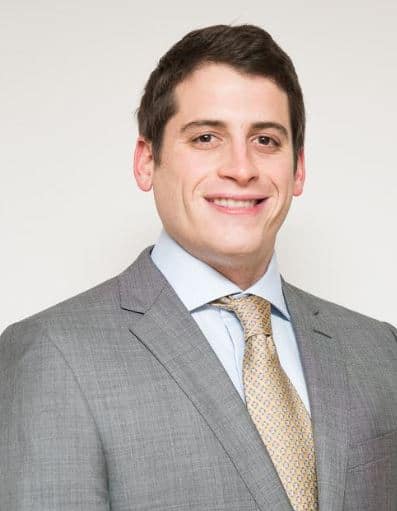 Dave Kemp is the Director of Business Development & Marketing at Oaktree Products and the Founder & Editor of Future Ear. In 2017, Dave launched his blog, FutureEar.co, where he writes about what’s happening at the intersection of voice technology, wearables and hearing healthcare. In 2019, Dave started the Future Ear Radio podcast, where he and his guests discuss emerging technology pertaining to hearing aids and consumer hearables. He has been published in the Harvard Business Review, co-authored the book, “Voice Technology in Healthcare,” writes frequently for the prominent voice technology website, Voicebot.ai, and has been featured on NPR’s Marketplace.
Dave Kemp is the Director of Business Development & Marketing at Oaktree Products and the Founder & Editor of Future Ear. In 2017, Dave launched his blog, FutureEar.co, where he writes about what’s happening at the intersection of voice technology, wearables and hearing healthcare. In 2019, Dave started the Future Ear Radio podcast, where he and his guests discuss emerging technology pertaining to hearing aids and consumer hearables. He has been published in the Harvard Business Review, co-authored the book, “Voice Technology in Healthcare,” writes frequently for the prominent voice technology website, Voicebot.ai, and has been featured on NPR’s Marketplace.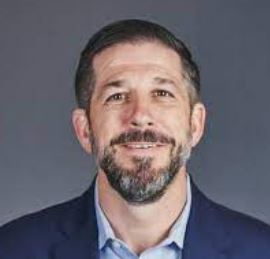 Nick Mengerink is the President of HearUSA
Nick Mengerink is the President of HearUSA


